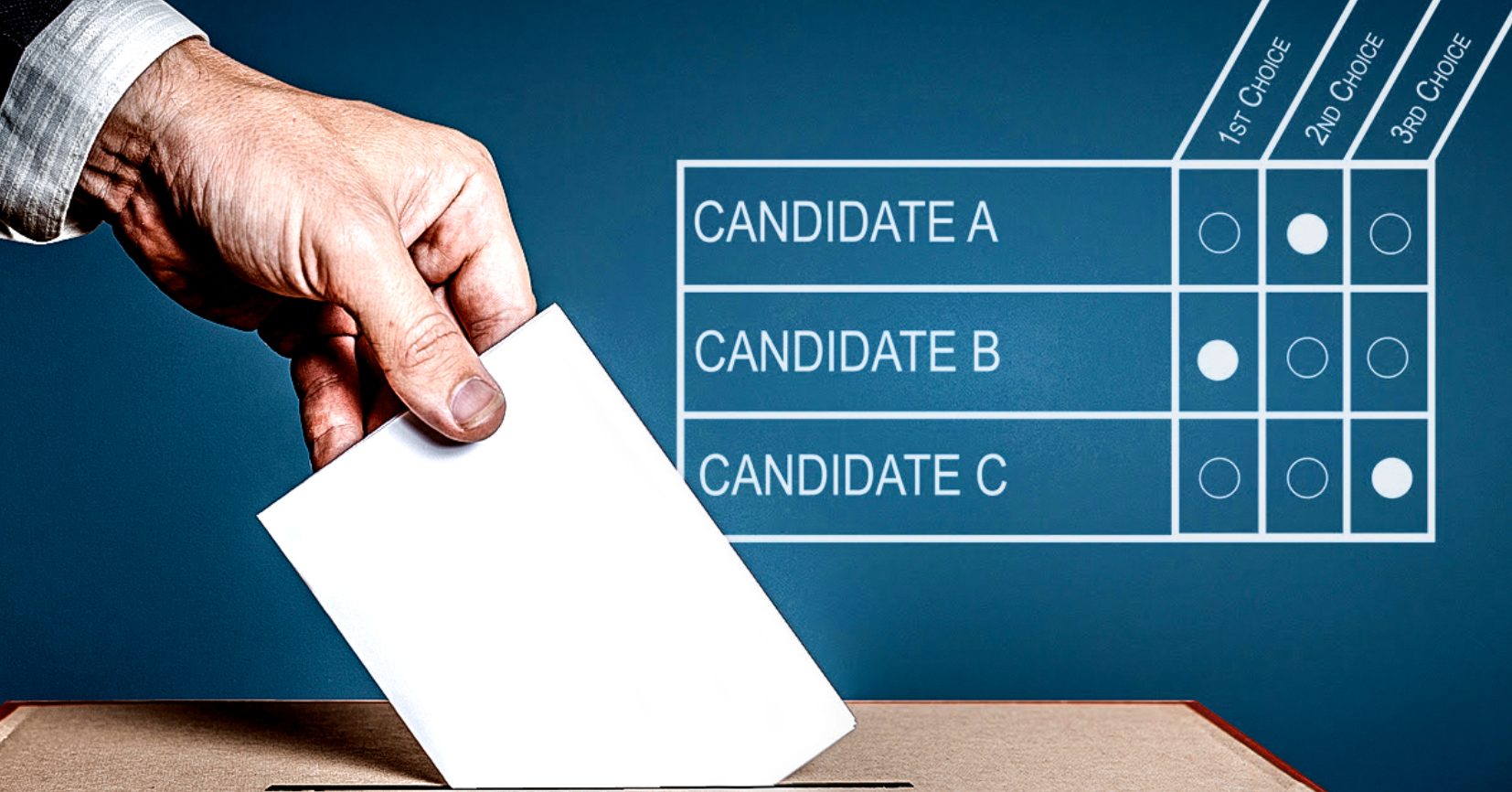By Kevin Johnson
Research conducted by the Election Reformers Network shows that the democratic rules in the United States are a source of political dysfunction and partisanship.
Political scientists measure partisanship via a NOMINATE score, which ranks elected representatives based on their roll call votes (with +1 being extremely conservative, and -1 extremely liberal). Whether a given district’s representative has an extreme or moderate score is primarily determined by political factors such as the demographics of the district.
At the Election Reformers Network, we believe the mechanics of the elections in our country also play a role, in particular the mechanics of primary elections and whether primaries are won with a majority, or with a small plurality in a crowded field. This theory directly relates to the election reform we’ve prioritized known as committed to first, Ranked Choice Voting, which is well designed to identify the majority-supported candidate in a crowded election.
To test our idea, analysts at Election Reformers Network we compared members of the 115th U.S. House of Representatives on the basis of their NOMINATE scores, taking into consideration the primary election results when the members first won seats in Congress (before the power of incumbency weighs in). The table below shows initial support for our hypothesis that low plurality primary winners tend to be more ideologically Right or Left in Congress.

To address the possibility that this analysis could be skewed by more partisan districts inherently generating more crowded primaries, we used Cook Partisan Voter Index data to control for district. We calculated an “expected nominate score” for each Congressional district and then measured members on the difference between the actual and expected scores. This approach shows an even clearer pattern: members who entered Congress with a low plurality primary victory were significantly more partisan relative to their districts than those who won majority support.

The issue of polarization is significant in scale and growing in intensity. We were surprised to find in this research that less than half the members of the 115th House (213 out of 435) won their first primary with a majority. 80 representatives had 35% support in the primary or less (a figure that does not include California and Washington, because of their “top-two” open primary systems).
As grassroots political organizations strengthen, parties are losing control of the candidate nomination process. As a result, primaries become more crowded, particularly for open seats, and more plurality winners enter Congress. It isn’t automatic that every low plurality winner will be a more ideologically extreme legislator, but on average more low plurality winners are likely to make Congress more extreme, to the Left and the Right, than the overall population.
In 2018 when this research was first published, at least 146 U.S. House primaries had five or more candidates, more than double the total for any recent election (see chart below). 212 primaries will have four or more candidates.
The solution to this problem is ranked choice voting, which allows voters to support multiple candidates in order of preference and nearly always results in a winning candidate who has support of the majority. In the past, ranked choice voting has been something of a “nice to have” for more liberal cities, like Cambridge Massachusetts. In an atmosphere of increasing political extremism, and in the context of much more crowded elections, ranked choice voting is now a “need to have.”
This article originally appeared on Election Reformers Network, but has been updated and published with permission at Rank the Vote.
Kevin Johnson is the founder and executive director of Election Reformers Network. Kevin has 20 years’ experience in election reform programming, including three years with ERN, ten years as a Board Member of Common Cause Massachusetts, and seven years working on overseas democracy promotion with the National Democratic Institute. Kevin is on the Advisory Boards of Fairvote, Issue One and Voter Choice Massachusetts.
The views and opinions expressed in this article are those of the authors and do not necessarily reflect the official policy or position of Rank the Vote, its members, supporters, funders, or affiliates.

